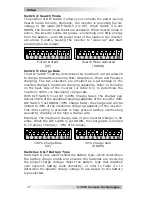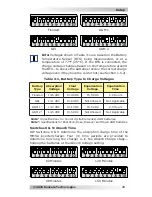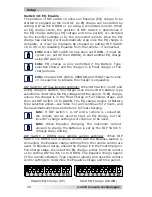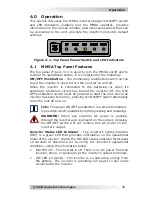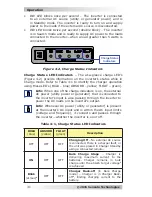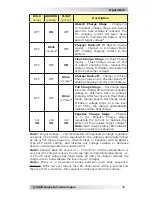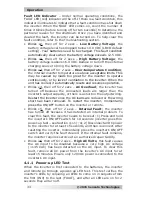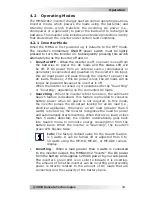
© 2015 Sensata Technologies
Maintenance & Troubleshooting
41
5.0 Maintenance & Troubleshooting
The following information is provided to help you keep your
MMSA1012 inverter/charger in optimum operational condition.
5.1 Recommended Inverter & Battery Care
The MMSA1012 inverter is designed to provide you with years of
trouble-free service. Even though there are no user-serviceable
parts, it is recommended that every six months you perform the
following maintenance steps to ensure optimum performance and
extend the life of your batteries.
WARNING
: Prior to performing these checks, switch both
the AC and DC circuits OFF.
• Visually inspect batteries for cracks, leaks, or swelling—replace
if necessary.
• Use baking soda to clean and remove any electrolyte spills or
buildups.
• Check and tighten all battery hold down clamps.
• Clean and tighten (10 to 12 ft-lbs) all DC terminals (battery and
inverter) and connecting cables.
• Check/
fi
ll battery water levels (Liquid Lead Acid batteries only).
• Check individual battery voltages (for those that vary more than
0.3 VDC from each other, equalize if possible, or replace).
• Check all cable runs for signs of cha
fi
ng—replace if necessary.
• Check the inverter’s cooling vents—clean as necessary.
5.1.1 Off-Season Storage
If placing a vehicle into seasonal storage, it is recommended that
you perform the following to ensure the system is properly shut
down (or properly con
fi
gured for seasonal storage). This is especially
important for maintaining the batteries.
• Perform the recommended maintenance steps noted above.
• Fully charge the batteries.
• Connect shorepower (if available) and verify that the breaker to
the battery charger is switched on.
• Verify the inverter is switched off.
• Switch OFF all unnecessary AC and DC loads.
5.2 Troubleshooting
The MMSA1012 inverter/charger is a fairly simple device to
troubleshoot. There are only two active circuits (AC and DC) as
well as a charging circuit. Table 5-1 is designed to help you quickly
identify the most common inverter and charger faults.

